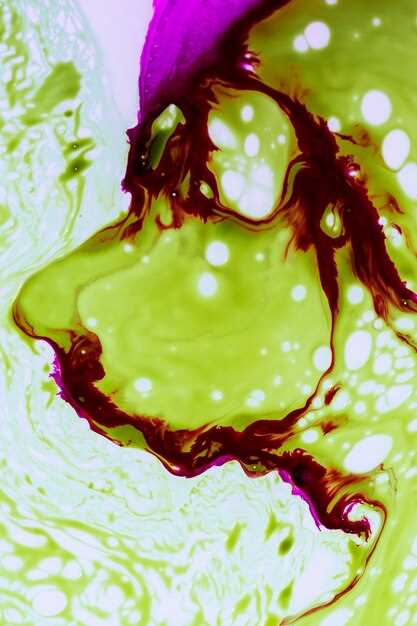
Looking for the perfect solution to your melting point needs? Look no further! Introducing hydroxyzine pamoate, the ultimate melting point master.
Why choose hydroxyzine pamoate?
Hydroxyzine pamoate is a powerful and reliable substance that offers unmatched accuracy and precision when it comes to determining melting points. With its exceptional qualities, it is the go-to choice for researchers, scientists, and professionals in the field.
Unleash the power of hydroxyzine pamoate:
1. Unmatched accuracy: Hydroxyzine pamoate provides precise and consistent results, ensuring you get the most reliable data for your experiments.
2. Exceptional versatility: Whether you’re testing solid or liquid samples, hydroxyzine pamoate can handle it all. From organic compounds to pharmaceutical substances, it’s your one-stop melting point solution.
3. Effortless usability: With its user-friendly interface and intuitive design, hydroxyzine pamoate makes it easy for anyone to master the art of measuring melting points.
Don’t settle for anything less than perfection when it comes to determining melting points. Choose hydroxyzine pamoate and unlock the true potential of your research. Get started today!
Description of Hydroxyzine Pamoate Melting Point
The hydroxyzine pamoate melting point refers to the temperature at which the solid form of hydroxyzine pamoate transitions into a liquid state. It is an essential property to consider when studying the thermal behavior and stability of the compound.
Physical Characteristics

Hydroxyzine pamoate is a white, crystalline powder that is sparingly soluble in water and alcohol. It is a hydrochloride salt form of hydroxyzine, which is an antihistamine used for treating anxiety and allergy-related symptoms.
Importance in Drug Development
The melting point of hydroxyzine pamoate is a critical parameter in drug development and formulation. Knowing the exact melting point enables researchers to determine the optimal processing conditions and stability of the compound during manufacturing.
The melting point also helps ensure that the compound remains in its solid state under normal storage conditions and does not degrade or lose its efficacy over time. It can help determine the suitability of hydroxyzine pamoate for different drug delivery systems, such as tablets, capsules, or suspensions.
Quality Control and Stability Testing
Pharmaceutical companies use the melting point as a quality control parameter to ensure the consistency and purity of hydroxyzine pamoate batches. It is also an important parameter during stability testing, where samples are subjected to different temperature and humidity conditions to assess the compound’s shelf life.
Measurement Techniques
The hydroxyzine pamoate melting point is determined using techniques such as differential scanning calorimetry (DSC) or capillary melting point apparatus. DSC measures the heat flow associated with the phase transition, while the capillary melting point apparatus determines the temperature at which the compound fully melts.
Conclusion
The hydroxyzine pamoate melting point is a crucial characteristic in drug development, formulation, quality control, and stability testing. Understanding its properties and behavior allows researchers to optimize the drug’s manufacturing process and ensure its efficacy and stability over time.
| Related Topics: | |
|---|---|
| Hydroxyzine Pamoate | Factors Affecting Melting Point |
Importance of Hydroxyzine Pamoate Melting Point
The melting point of hydroxyzine pamoate is a crucial property that plays a significant role in various aspects of its usage. Knowing the melting point can provide valuable information for pharmaceutical manufacturers, researchers, and users alike.
Quality Control
The determination of the melting point is an essential quality control parameter for hydroxyzine pamoate. By ensuring that the compound melts at the expected temperature range, it can be confirmed that the product is of high purity and free from impurities. Deviations in the melting point may indicate the presence of impurities or variations in the manufacturing process.
Formulation Development
The melting point of hydroxyzine pamoate is crucial in the formulation development of pharmaceutical products. It helps in determining the best dosage form and formulation techniques. Depending on the melting point, the drug can be formulated into different forms such as tablets, capsules, or suspensions, ensuring optimal stability and efficacy.
Storage and Stability
Understanding the melting point of hydroxyzine pamoate is important for its proper storage and stability. The compound should be stored at temperatures below its melting point to prevent degradation, loss of potency, or alteration of physical properties. This information helps manufacturers and users in ensuring the longevity and effectiveness of the product.
Process Optimization
The melting point of hydroxyzine pamoate also plays a role in process optimization during manufacturing. It helps determine the ideal temperature for processing, including mixing, granulation, and drying. By optimizing the process parameters based on the melting point, the efficiency and reproducibility of the manufacturing process can be improved.
In summary, the melting point of hydroxyzine pamoate is of great importance in pharmaceutical manufacturing, formulation development, storage, stability, and process optimization. It is a crucial parameter that provides valuable insights into the quality, stability, and efficacy of the compound.
Factors Affecting Hydroxyzine Pamoate Melting Point
The melting point of hydroxyzine pamoate can be influenced by various factors:
- Purity of the substance: The melting point of hydroxyzine pamoate can vary depending on the purity of the sample. Impurities can lower or raise the melting point, affecting the overall quality and effectiveness of the medication.
- Storage conditions: Improper storage conditions, such as exposure to high temperatures or humidity, can lead to changes in the melting point of hydroxyzine pamoate. It is important to store the medication in a cool and dry place to maintain its stability.
- Formulation: Different formulations of hydroxyzine pamoate, such as tablets or capsules, may have different melting points. This can be due to variations in the manufacturing process or the inclusion of additional ingredients.
- Chemical interactions: Hydroxyzine pamoate can interact with other substances, such as solvents or excipients, which can affect its melting point. These interactions can be intentional, as in the case of controlled-release formulations, or unintentional due to impurities or degradation products.
- Pressure: The melting point of hydroxyzine pamoate can also be influenced by the pressure under which it is measured. Changes in pressure can result in variations in the melting point, making it necessary to specify the conditions under which it is determined.
Understanding the factors that affect the melting point of hydroxyzine pamoate is important in ensuring the quality and stability of the medication. By controlling these factors, pharmaceutical manufacturers can produce a consistent product with a reliable melting point.
Measurement Techniques for Hydroxyzine Pamoate Melting Point
Accurately measuring the melting point of hydroxyzine pamoate is crucial in the pharmaceutical industry to ensure the quality and efficacy of the drug. Several techniques are employed to determine the precise melting point of this compound.
1. Melting Point Apparatus
The most common method for measuring the melting point of hydroxyzine pamoate is by using a melting point apparatus. This apparatus consists of a heating block, a temperature sensor, and a display unit. The sample of hydroxyzine pamoate is placed in a capillary tube and inserted into the melting point apparatus. The temperature is gradually increased until the sample starts to melt, and the temperature at which this occurs is recorded as the melting point.
2. Differential Scanning Calorimetry (DSC)
DSC is another technique widely used to measure the melting point of hydroxyzine pamoate. In this method, the sample is heated at a constant rate while its heat capacity is measured. The melting point is determined by observing the endothermic peak on the DSC curve, which corresponds to the energy required for the phase transition from solid to liquid.
| Method | Advantages | Disadvantages |
|---|---|---|
| Melting Point Apparatus | Simple and easy to use | May not provide precise results for complex mixtures |
| Differential Scanning Calorimetry (DSC) | Provides accurate and detailed results | Requires specialized equipment and training |
By utilizing these measurement techniques, scientists and researchers can obtain reliable data on the melting point of hydroxyzine pamoate. This information is vital in determining its stability, purity, and pharmaceutical formulation.
Applications of Hydroxyzine Pamoate Melting Point
Hydroxyzine pamoate is a widely used medication in both veterinary and human medicine. The melting point of hydroxyzine pamoate plays a crucial role in determining the stability and effectiveness of this drug. Understanding the applications of the hydroxyzine pamoate melting point is essential for pharmaceutical companies, researchers, and healthcare professionals.
1. Quality Control
One of the primary applications of the hydroxyzine pamoate melting point is in quality control. Pharmaceutical companies use the melting point as a standard to ensure the purity and quality of hydroxyzine pamoate during the manufacturing process. By measuring the melting point, they can identify any impurities or deviations that may affect the drug’s performance.
2. Drug Formulation
The melting point also plays a crucial role in the formulation of hydroxyzine pamoate-based medications. Different formulations require specific melting points to ensure stability and optimal drug delivery. By understanding the melting point, formulation scientists can develop suitable dosage forms such as tablets, capsules, or suspensions that can effectively release hydroxyzine pamoate in the body.
The melting point of hydroxyzine pamoate also affects the shelf-life and storage conditions of the drug. Proper knowledge of the melting point helps in determining the ideal storage temperature and packaging requirements to maintain the drug’s potency and effectiveness.
3. Pharmacokinetics

Pharmacokinetics is the study of how drugs are absorbed, distributed, metabolized, and eliminated by the body. The melting point of hydroxyzine pamoate can influence its pharmacokinetics, such as its absorption rate and bioavailability. Researchers use the melting point as a parameter to optimize drug formulations that enhance drug absorption and maximize therapeutic effects.
Furthermore, understanding the melting point can help healthcare professionals in dosage adjustments for patients based on factors such as age, weight, and other clinical conditions.
In conclusion, the applications of the hydroxyzine pamoate melting point are diverse and crucial in various aspects of pharmaceutical development, drug manufacturing, and patient care. By understanding the melting point, researchers, pharmaceutical companies, and healthcare professionals can ensure the quality, stability, and efficacy of hydroxyzine pamoate-based medications.
